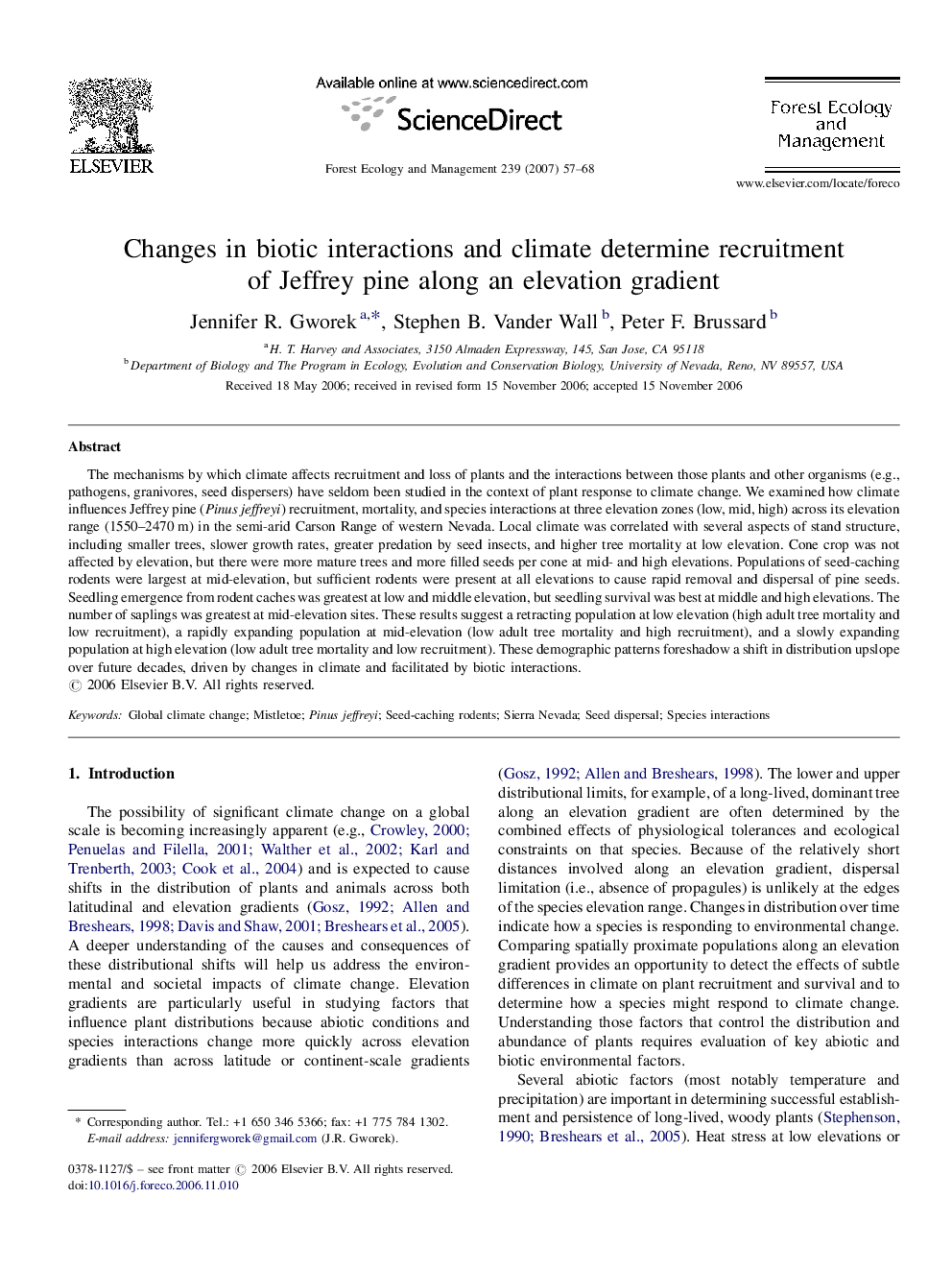| کد مقاله | کد نشریه | سال انتشار | مقاله انگلیسی | نسخه تمام متن |
|---|---|---|---|---|
| 89796 | 159357 | 2007 | 12 صفحه PDF | دانلود رایگان |

The mechanisms by which climate affects recruitment and loss of plants and the interactions between those plants and other organisms (e.g., pathogens, granivores, seed dispersers) have seldom been studied in the context of plant response to climate change. We examined how climate influences Jeffrey pine (Pinus jeffreyi) recruitment, mortality, and species interactions at three elevation zones (low, mid, high) across its elevation range (1550–2470 m) in the semi-arid Carson Range of western Nevada. Local climate was correlated with several aspects of stand structure, including smaller trees, slower growth rates, greater predation by seed insects, and higher tree mortality at low elevation. Cone crop was not affected by elevation, but there were more mature trees and more filled seeds per cone at mid- and high elevations. Populations of seed-caching rodents were largest at mid-elevation, but sufficient rodents were present at all elevations to cause rapid removal and dispersal of pine seeds. Seedling emergence from rodent caches was greatest at low and middle elevation, but seedling survival was best at middle and high elevations. The number of saplings was greatest at mid-elevation sites. These results suggest a retracting population at low elevation (high adult tree mortality and low recruitment), a rapidly expanding population at mid-elevation (low adult tree mortality and high recruitment), and a slowly expanding population at high elevation (low adult tree mortality and low recruitment). These demographic patterns foreshadow a shift in distribution upslope over future decades, driven by changes in climate and facilitated by biotic interactions.
Journal: Forest Ecology and Management - Volume 239, Issues 1–3, 15 February 2007, Pages 57–68